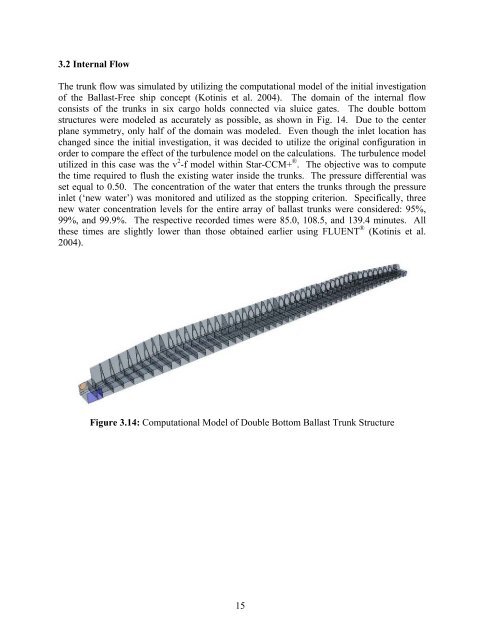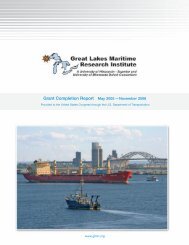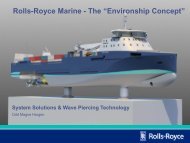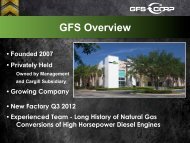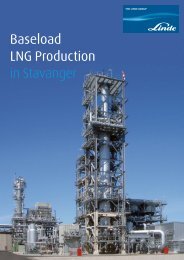Further Development and Optimization of the Ballast-Free Ship ...
Further Development and Optimization of the Ballast-Free Ship ...
Further Development and Optimization of the Ballast-Free Ship ...
You also want an ePaper? Increase the reach of your titles
YUMPU automatically turns print PDFs into web optimized ePapers that Google loves.
3.2 Internal Flow<br />
The trunk flow was simulated by utilizing <strong>the</strong> computational model <strong>of</strong> <strong>the</strong> initial investigation<br />
<strong>of</strong> <strong>the</strong> <strong>Ballast</strong>-<strong>Free</strong> ship concept (Kotinis et al. 2004). The domain <strong>of</strong> <strong>the</strong> internal flow<br />
consists <strong>of</strong> <strong>the</strong> trunks in six cargo holds connected via sluice gates. The double bottom<br />
structures were modeled as accurately as possible, as shown in Fig. 14. Due to <strong>the</strong> center<br />
plane symmetry, only half <strong>of</strong> <strong>the</strong> domain was modeled. Even though <strong>the</strong> inlet location has<br />
changed since <strong>the</strong> initial investigation, it was decided to utilize <strong>the</strong> original configuration in<br />
order to compare <strong>the</strong> effect <strong>of</strong> <strong>the</strong> turbulence model on <strong>the</strong> calculations. The turbulence model<br />
utilized in this case was <strong>the</strong> v 2 -f model within Star-CCM+ ® . The objective was to compute<br />
<strong>the</strong> time required to flush <strong>the</strong> existing water inside <strong>the</strong> trunks. The pressure differential was<br />
set equal to 0.50. The concentration <strong>of</strong> <strong>the</strong> water that enters <strong>the</strong> trunks through <strong>the</strong> pressure<br />
inlet (‘new water’) was monitored <strong>and</strong> utilized as <strong>the</strong> stopping criterion. Specifically, three<br />
new water concentration levels for <strong>the</strong> entire array <strong>of</strong> ballast trunks were considered: 95%,<br />
99%, <strong>and</strong> 99.9%. The respective recorded times were 85.0, 108.5, <strong>and</strong> 139.4 minutes. All<br />
<strong>the</strong>se times are slightly lower than those obtained earlier using FLUENT ® (Kotinis et al.<br />
2004).<br />
Figure 3.14: Computational Model <strong>of</strong> Double Bottom <strong>Ballast</strong> Trunk Structure<br />
15


